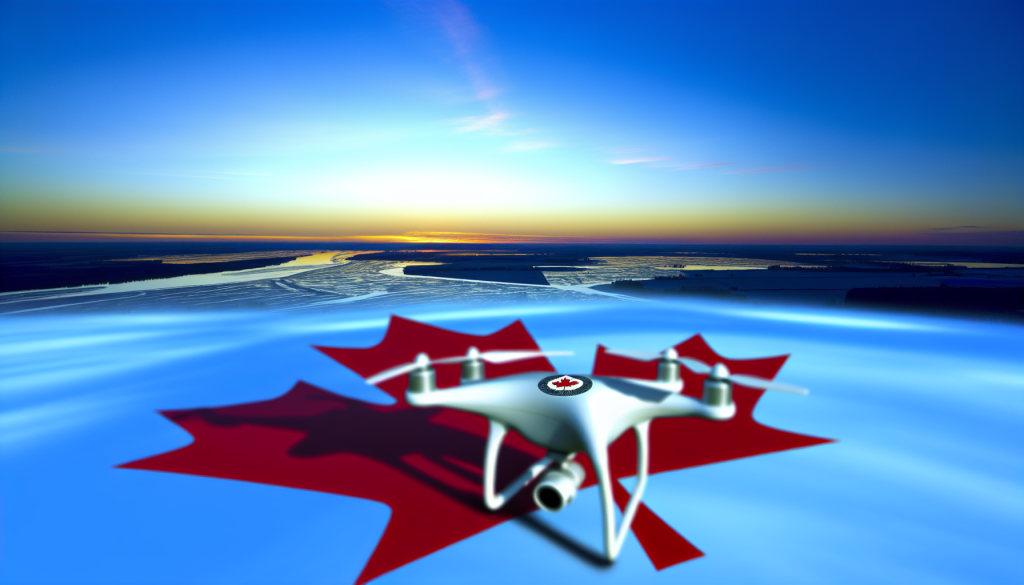Canada’s Drone Industry Takes Flight with Ukraine
OTTAWA — As the conflict in Ukraine continues to highlight the increasingly critical role of drones in modern warfare, Canadian companies are jumping into the fray, seeking to provide advanced technology to a military that has become adept in utilizing these uncrewed vehicles.
Emerging Opportunities
Katheron Intson, CEO of Sentinel R&D, a small producer of fixed-wing aerial drones based in Hamilton, Ontario, emphasizes the importance of connecting with Ukrainian military needs. “Being humble, being willing to integrate with some of the proven technologies, that’s how you can be useful to Ukraine,” Intson stated. Her insights bring to light the significant challenges and opportunities within the drone market, which is still in its formative stages in Canada.
A Collaborative Effort
To successfully penetrate this competitive landscape, Canadian firms like Sentinel are leveraging connections through investors and participating in trade missions organized by Ukrainians actively looking for western technology. The partnership is seen as mutually beneficial: while assisting Ukraine in repelling Russian aggression, Canadian companies also gather crucial insights that will be applicable in future military engagements.
Intson’s own experiences resonate on a personal level as her family’s roots lie in Estonia, a nation that has similarly battled Soviet dominance. This shared history fosters a deep kinship with Ukraine’s struggle against invasion.
Ukrainian Drone Warfare
The Ukrainian military has established an entire branch devoted to drone warfare, deploying uncrewed systems to significant effect. Drones have been utilized in direct engagements, such as dropping grenades on enemy soldiers and executing strategic attacks on airfields. While these technologies have transformed warfare, operators must remain vigilant against threats from both low-cost Russian drones and long-range strikes from Iranian-designed Shahed drones.
Learning from the Battlefield
As Canada reevaluates its military capabilities, Intson noted, “While the goal was to be helpful to Ukraine, the lessons that we are learning there—and by ‘we,’ I mean NATO—can be applied to future conflicts.” Sentinel has rapidly evolved its operations, transitioning from garage prototypes to a dedicated 5,000-square-foot facility focused on drone development.
The firm anticipates supplying the U.S. military’s special operations command with its ReKam drones, while other Canadian competitors, such as WaveStorm, are similarly learning by engaging directly in the operational environments of eastern Europe.
A Gold Rush Mentality
A burgeoning “gold rush” reflects the escalating military spending from various governments amid ongoing conflicts. The technology hurdles appear manageable, leading many startups to assert themselves as capable military suppliers. However, as Gal Hana, CEO of WaveStorm, cautions, the proof lies in real-world performance versus laboratory benchmarks. “You can’t know for sure until a real enemy is trying to destroy it,” he remarked.
The urgency of the battlefield demands rapid innovation and development, contrasting sharply with the typical slow pace of technological advancements often seen in civilian sectors. Combatants require immediate solutions, pushing firms to prioritize agility and adaptability in their designs.
Creating Synergy with the Military
Canadian connections have been essential for companies like WaveStorm to establish links with Ukrainian forces. Exposure to intense operational demands serves as a crucible for innovation, allowing these companies to perfect their offerings under pressure. Hana notes that combatants can’t afford to wait for the perfect product; they need effective solutions promptly.
Showcasing New Technologies
During an expo held at Ottawa’s Area X.O, which serves as a government-sponsored testing ground for innovative technologies, Intson presented Sentinel’s flagship product, the ReKam 3.2 drone. Designed to be functional rather than flashy, the drone aims to meet Ukraine’s needs for cost-effective, reusable systems capable of carrying significant payloads.
The ReKam 3.2’s “payload-agnostic” design allows users to equip it with different tools, whether for surveillance or offensive capabilities. This versatility makes it a valuable asset in the rapidly changing theatre of war.
Building Essential Networks
Intson attributes much of Sentinal’s success to its strong Estonian connections, including relationships with influential investors and organizations focused on defense technology. Participation in initiatives like Brave1, designed to link suppliers with military needs, illustrates Ukraine’s proactive stance in fostering cooperation with Western technology firms.
Dual-Use Technologies
Another critical aspect of Canada’s military technology strategy revolves around dual-use technologies—those applicable in both civilian and military contexts. This approach not only serves to enhance military capabilities but also diversifies the market opportunities for Canadian companies. “Turning civilian technology to military purposes is much of what WaveStorm does,” Hana explained, highlighting the importance of ruggedizing technologies for harsh environments.
Future Perspectives
As the global landscape shifts, Canadian companies recognize that investing in adaptive technologies will be crucial. From aiding first responders in disaster areas to enhancing military operations, better-performing products promise broader applications both on the battlefield and in civilian life.
Ultimately, the potential for Canadian companies to thrive in this environment rests on their ability to learn from real-world experiences, integrate effectively with proven technologies, and maintain a mindset that values speed, creativity, and agility in innovation. The drive to equip Ukraine while preparing for future conflicts may well serve as a model for the evolution of military technology on a global scale.

